This article explains both the SSIS term extraction and term lookup components. Besides, it illustrates the use cases of each one of them.
Read more »
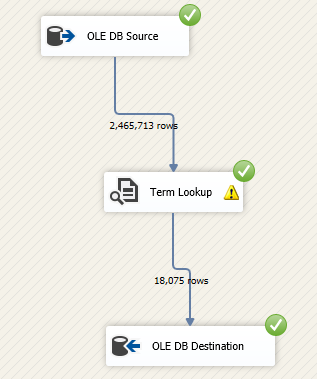


This article explains both the SSIS term extraction and term lookup components. Besides, it illustrates the use cases of each one of them.
Read more »
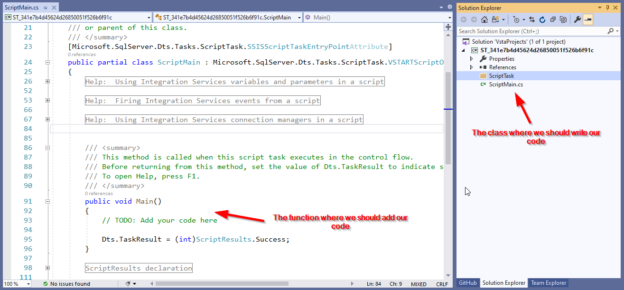
This article explains the SSIS Script task and Script component, the scripting tools available in the SQL Server Integration Services (SSIS).
Read more »

This article will explore the Copy Data tool for importing data into Azure SQL Database from a web source.
Read more »
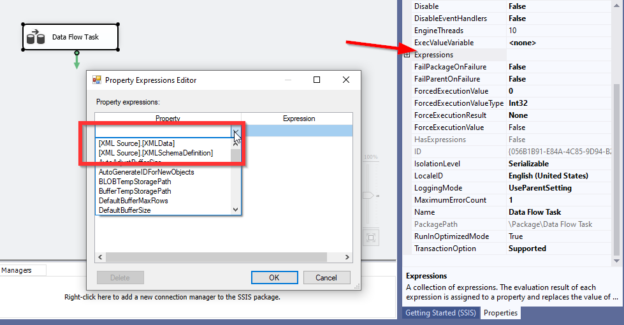
This article explains the SSIS XML Source and the SSIS XML task, which are the XML-related components in the SQL Server Integration Services.
Read more »
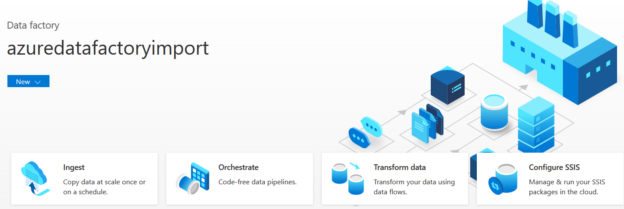
DBA may import, export regularly within a different environment. You might receive data in a specified format for importing it into database tables.
Read more »
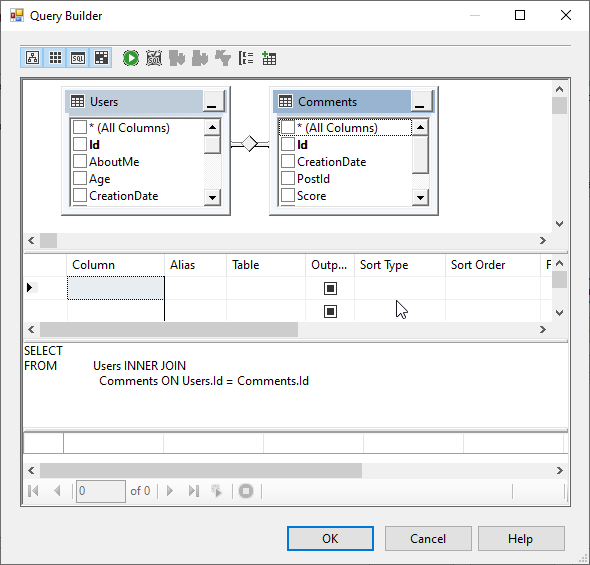
This article compares the SSIS OLE DB Destination SQL command with the “Table or View” data access mode. In a previously published article, SSIS OLE DB Destination vs SQL Server Destination, in this series, we explained the OLE DB Destination component in SSIS and illustrated how it differs from the SQL Server Destination component. So, in this article, we will focus on the OLE DB Destination data access modes, not the component itself.
Read more »
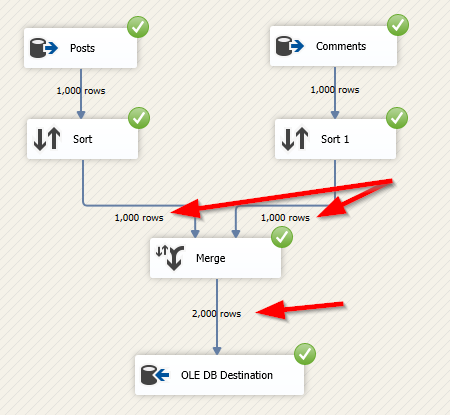
SSIS Merge Join and Merge transformations are two similar components used to combine two input data sources into one output. This article explains both transformations and illustrates when and how to use each one of them.
Read more »
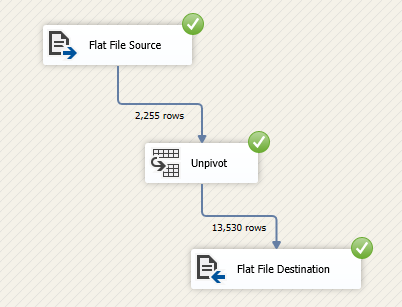
This article explains the SSIS pivot transformation and how it differs from the unpivot transformation.
Read more »
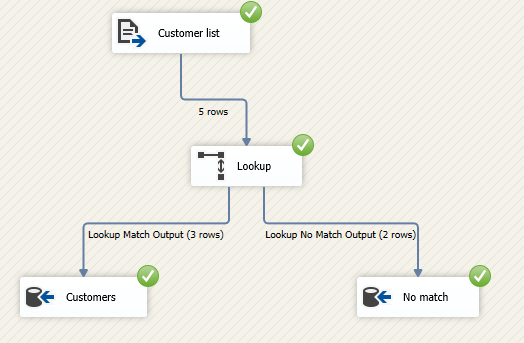
This article will explain how to use the SSIS lookup transformation and how it differs from the fuzzy lookup. This is a continuation of the SSIS features face-to-face series that we published previously on this website.
Read more »
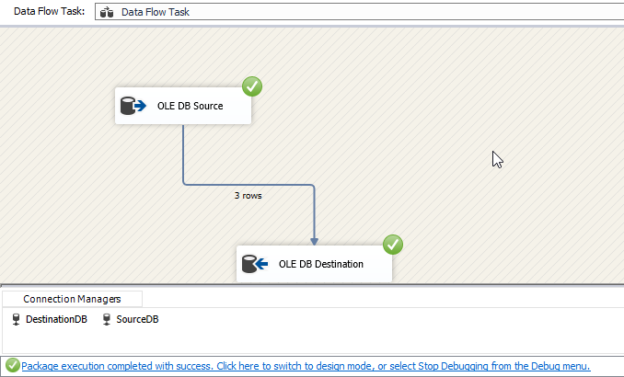
In this article, we will briefly explain the VS_NEEDSNEWMETADATA SSIS exception, one of the most popular exceptions that an ETL developer may face while using SSIS. Then, we will run an experiment that reproduces this error. Then, we will show how we can fix it.
Read more »
This article will explore the process for Lift and Shift SSIS packages to Azure using Azure Data Factory V2.
Read more »
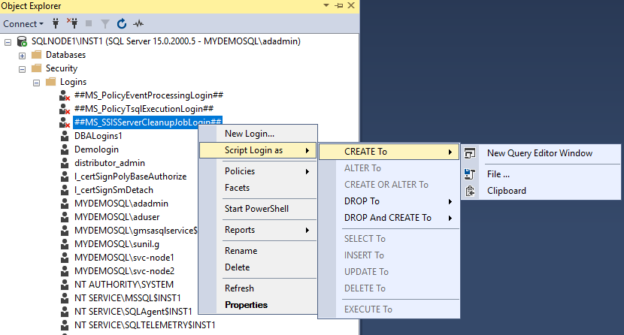
This article will explore the right way of moving integration services (SSIS) catalog SQL Database to a new instance.
Read more »
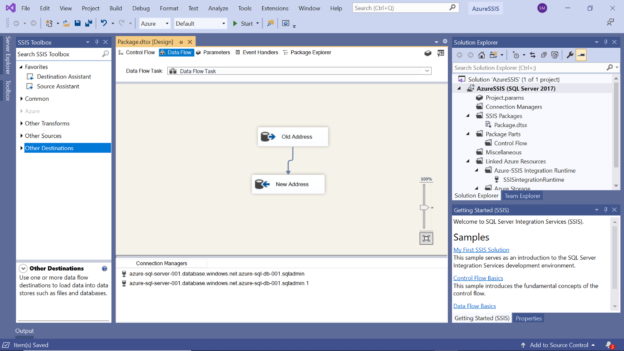
In this article, we will learn how to deploy SSIS packages which are typically built on developer workstations, to Azure Data Factory using Visual Studio and Data Tools.
Read more »
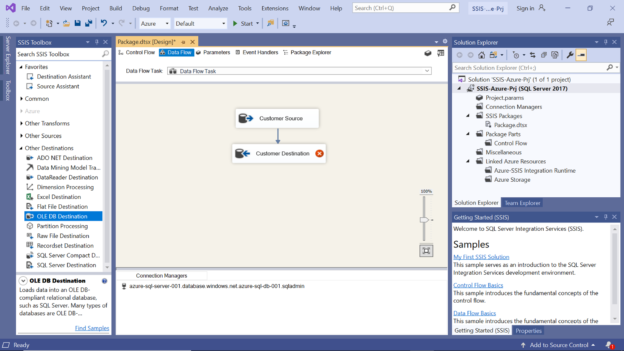
In this article, we will learn how to populate data from the Azure SQL database into Azure Synapse Analytics using SQL Server Integration Services (SSIS).
Read more »
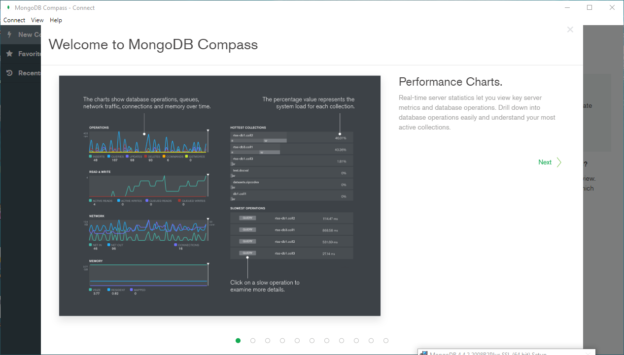
In this article, we will explain how to install MongoDB on the Windows operating system, how to install and configure the ODBC driver and connector that allows us to import data from MongoDB to SQL Server using SSIS.
Read more »
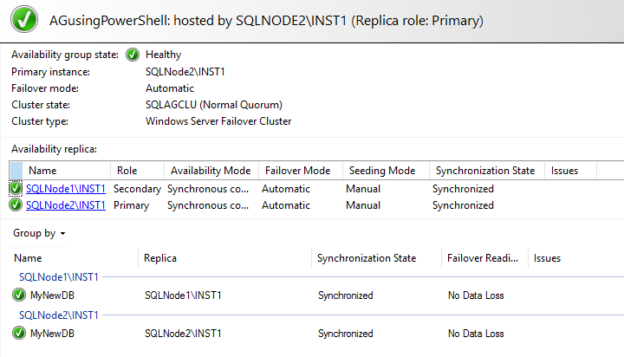
In this 39th article for SQL Server Always On Availability Group series, we will learn to configure SSISDB in the highly available AG groups.
Read more »
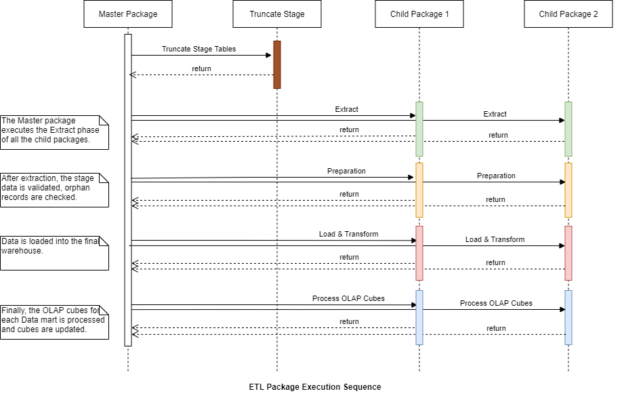
In this article, I am going to explain in detail how to document SSIS packages using Sequence Diagrams and the importance of these diagrams in the field of software engineering, no matter which programming language are you using. In my previous article, I have talked about the various UML Diagrams that are being used to document various software engineering processes. Also, I have talked about modular ETL architecture and how to create such a modular package in SSIS. Sequence diagrams are also a part of the broader UML Diagrams which define the interaction between the various components in the system in a chronological manner.
Read more »
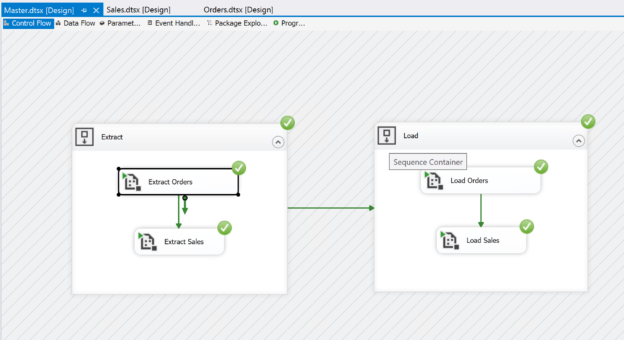
In this article, I am going to demonstrate about implementing the Modular ETL in SSIS practically. In my previous article on Designing a Modular ETL Architecture, I have explained in theory what a modular ETL solution is and how to design one. We have also understood the concepts behind a modular ETL solution and the benefits of it in the world of data warehousing. We have also related the concept of microservices architecture in software development to that of the modular ETL solution.
Read more »
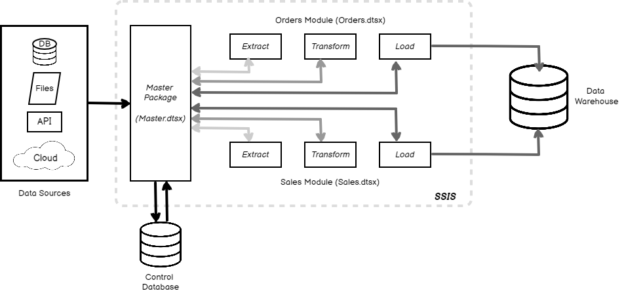
In this article, I am going to demonstrate in detail the Modular ETL Architecture. ETL is a vast concept which explains the methodology of moving data across various sources to destinations while performing some sort of transformations within it. This is an advanced article that considers that the user has a substantial amount of understanding about how ETL is implemented using different tools like SSIS and the underlying working principle along with how to deploy multiple packages using SSIS. It is extremely important to implement a well-designed ETL architecture for your organization’s workload, otherwise, it might lead to performance degradations along with other challenges. To keep things simple, I will just explain the Modular ETL Architecture in this article which will be followed by a detailed hands-on tutorial in the next article – “Implementing Modular Architecture in ETL using SSIS”.
Read more »

In the previous articles, we showed how to copy data between different data stores, located in an on-premises server or in the cloud and how to perform data transformation on that data using the Azure Data Factory.
Read more »
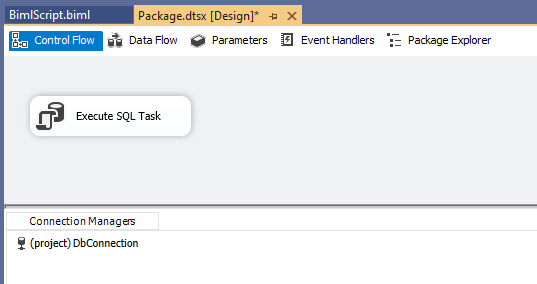
In the previously published articles in this series, we talked about the Business Intelligence Markup Language (BIML) and how to use the technology to build and manage SQL Server Integration Services (SSIS) packages. Besides managing SSIS packages, we can also manage SSAS models and build databases using BIML.
Read more »
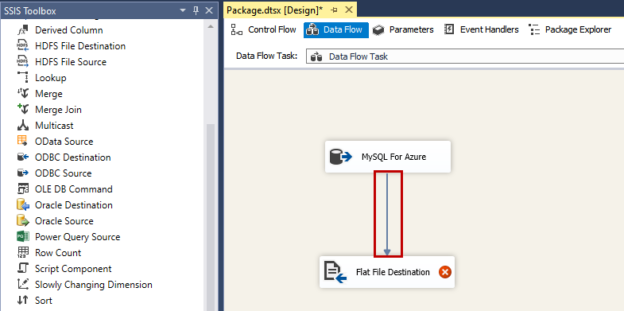
In this article, I am going to show how we can configure the ODBC driver to connect the Azure Database for MySQL Server. Also, I am going to demonstrate the configuration using the SQL Server Integration Services (SSIS) package.
Read more »
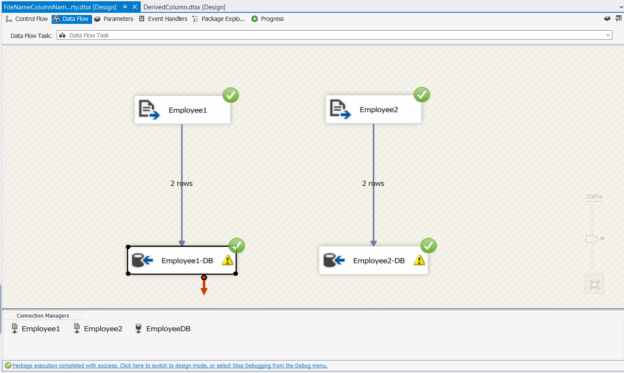
In this article, I am going to discuss SSIS data lineage concepts, which are often used while designing ETL workloads on a data warehouse. Although this article is focused on implementing data lineage using SSIS, it does not only confine to SSIS but to any ETL tools in the market using which data is moved from one source to a destination. In my previous article, Understanding Data Lineage in ETL, I have already discussed the generic importance of data lineage concepts for any ETL tool. I would definitely suggest you have a look at it if you want to understand in general how data lineage helps to track the source of a single record in the warehouse.
Read more »
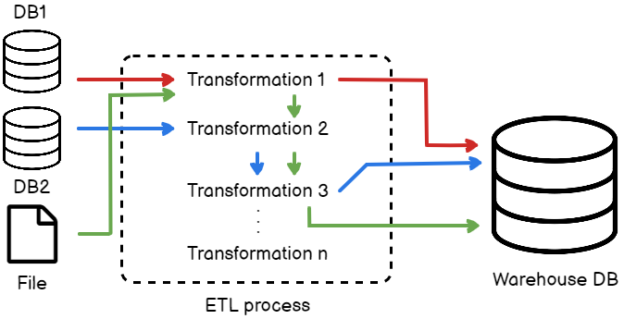
In this article, I am going to explain what Data Lineage in ETL is and how to implement the same. In this modern world, where companies are dealing with a humongous amount of data every day, there also lies a challenge to efficiently manage and monitor this data. There are systems that generate data every second and are being processed to a final reporting or monitoring tool for analysis. In order to process this data, we use a variety of ETL tools, which in turn makes the data transformation possible in a managed way.
Read more »
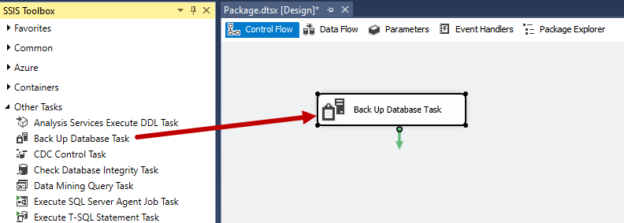
In this article, I am going to explain how we can upload the backup file to an FTP Server using the SSIS FTP task. For the demonstration, I have installed SQL Server 2017 on my workstation and restored the AdventureWorks2017 database.
Read more »© Quest Software Inc. ALL RIGHTS RESERVED. | GDPR | Terms of Use | Privacy